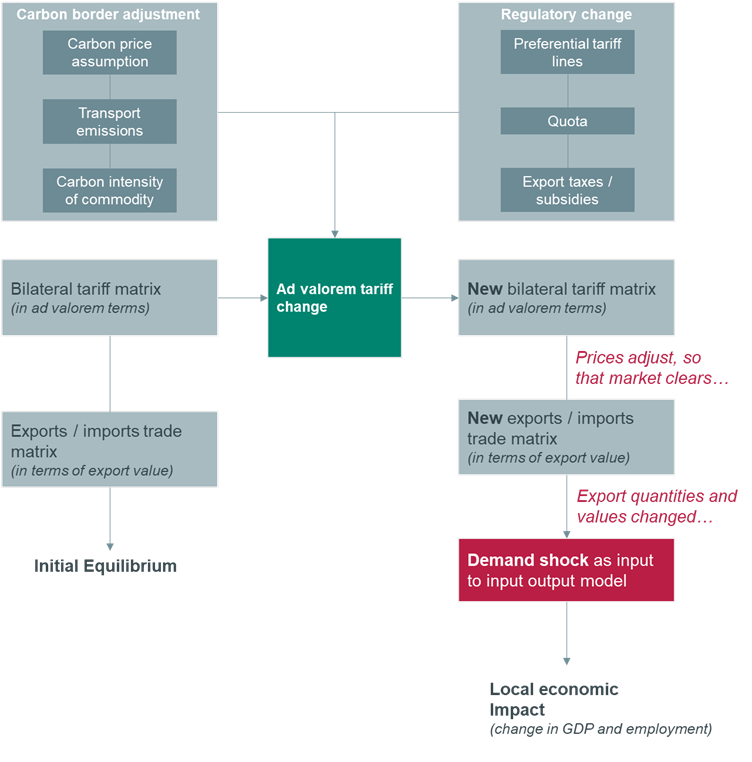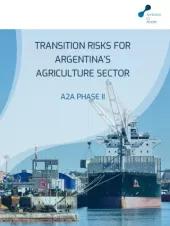The CLIMTRADE tool allows users to analyse a range of economic impacts associated with carbon border adjustments. The Excel-based tool uses partial equilibrium modelling and input-output analysis to provide quantitative insights into economic indicators such as national export revenues, domestic employment, or GDP.
CLIMTRADE is an Excel-based tool to support the quantitative evaluation of economic impacts associated with the introduction of carbon border adjustment mechanisms. It is designed to facilitate the analysis of opportunities (for low emission products) and risks (facing emissions intensive activities) as climate constraints are integrated into the bilateral and multilateral regulation of international trade.
The tool draws on Francois & Hall (2002)’s global simulation model, a multi-country global market partial equilibrium representation of industry- or product-level trade, assuming national product differentiation (i.e. imports from different origins are imperfect substitutes). CLIMTRADE extends the original approach by fully integrating the endogenous modelling of carbon tariffs, and by facilitating the evaluation of mitigation measures’ (emission intensity reductions) economic impacts in the context of trade.
CLIMTRADE simulates the economic impact of changes to product tariffs from the introduction of carbon border adjustments. Endogenous impacts are driven by bilateral carbon price differences, a commodity’s emission intensity, as well as transport emission factors and distances. Domestic economic impacts, in terms of GDP and employment effects, are estimated via input-output analysis.











